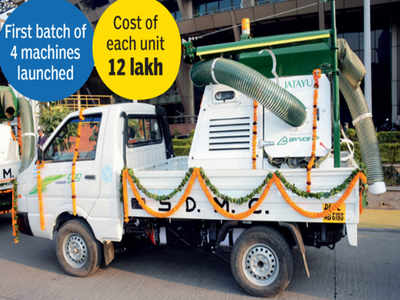In
To reduce the impacts of dust there can be two possible remedies. First, afforestation in Rajasthan-Gujarat Corridor and second, mechanized road sweeping operations to curb road dust out of Delhi’s air environment.
It is imperative to note that large-scale afforestation in
In addition, at
Table 1: Status of MRS machines in Delhi
| Urban Local Body | Number of MRS Machines | Operating shifts per day |
|---|---|---|
| South Delhi Municipal Corporation | 18 | One |
| North Delhi Municipal Corporation | 12 | One |
| New Delhi Municipal Corporation | 09 | One/Two |
| East Delhi Municipal Corporation | 09 | One |
The Energy and Resources Institute (TERI) has been assisting South Delhi Municipal Corporation (SDMC) and North Delhi Municipal Corporation (North DMC) in streamlining the MRS operations and increasing the effectiveness of these machines through continuous independent assessments based on statistical analysis approach. The findings of the study revealed; on an average (August – December) SDMC sweeps about 13.78 Km/shift/MRS vehicle in about 3.55hrs and North DMC sweeps about 29.4 km/shift/MRS vehicle in about 4.89hrs under an 8 hrs working shift.
There is an urgent need to increase the sweeping time and distance per shift in both the corporations and reach up to 50 km/shift/MRS vehicle with two shifts per day operation to make MRS operations economically viable and adhere the Central Public Health and Environmental Engineering Organization (CPHEEO) guidelines.
Further, effective planning in terms of operation and maintenance along with appropriate Monitoring reporting and verification can help in enhancing the effectiveness of these machines and reduce particulate matter pollution from Delhi’s air environment. Delhi government should soon deploy more such machines to reduce air pollution in Delhi.










